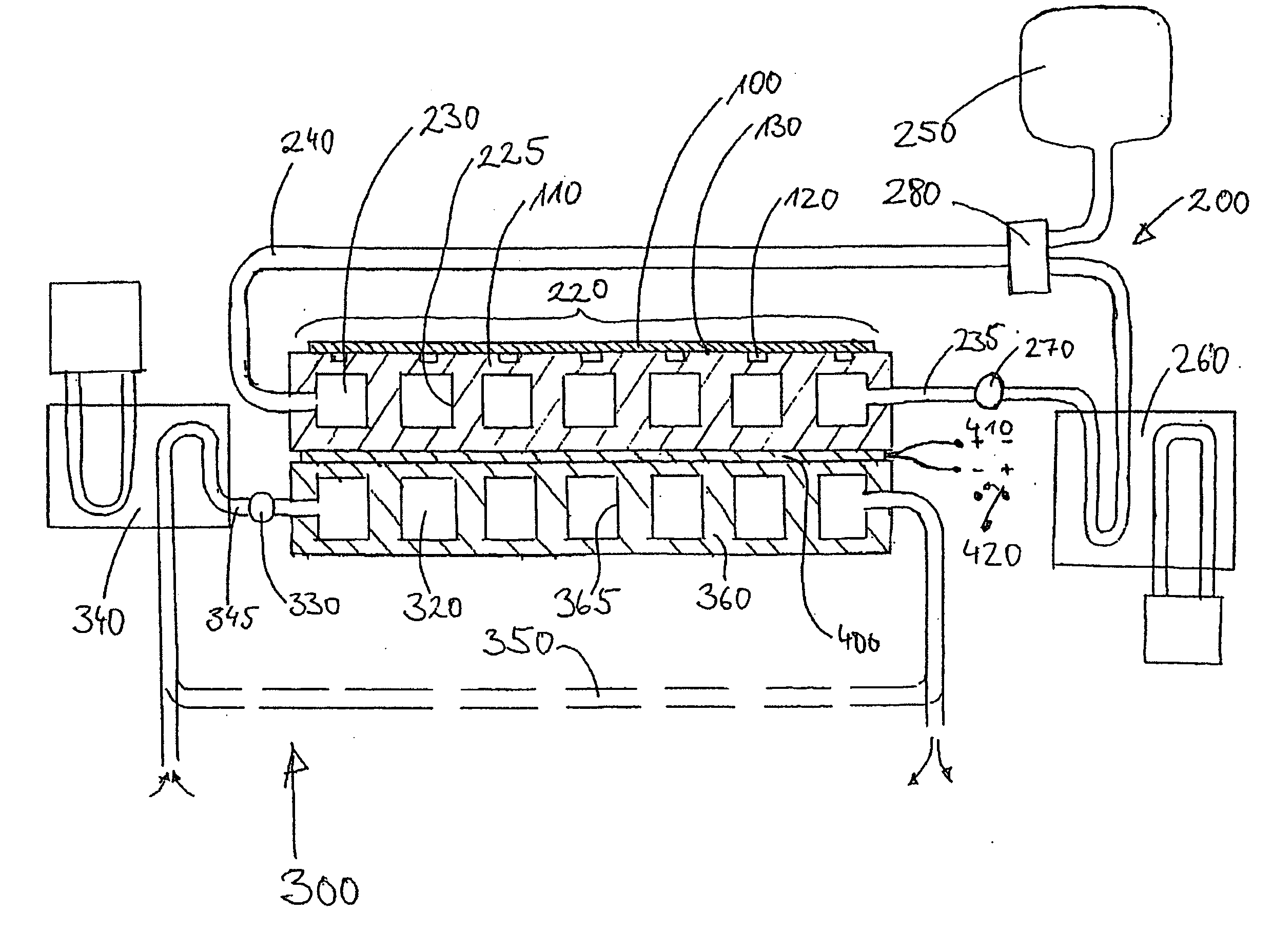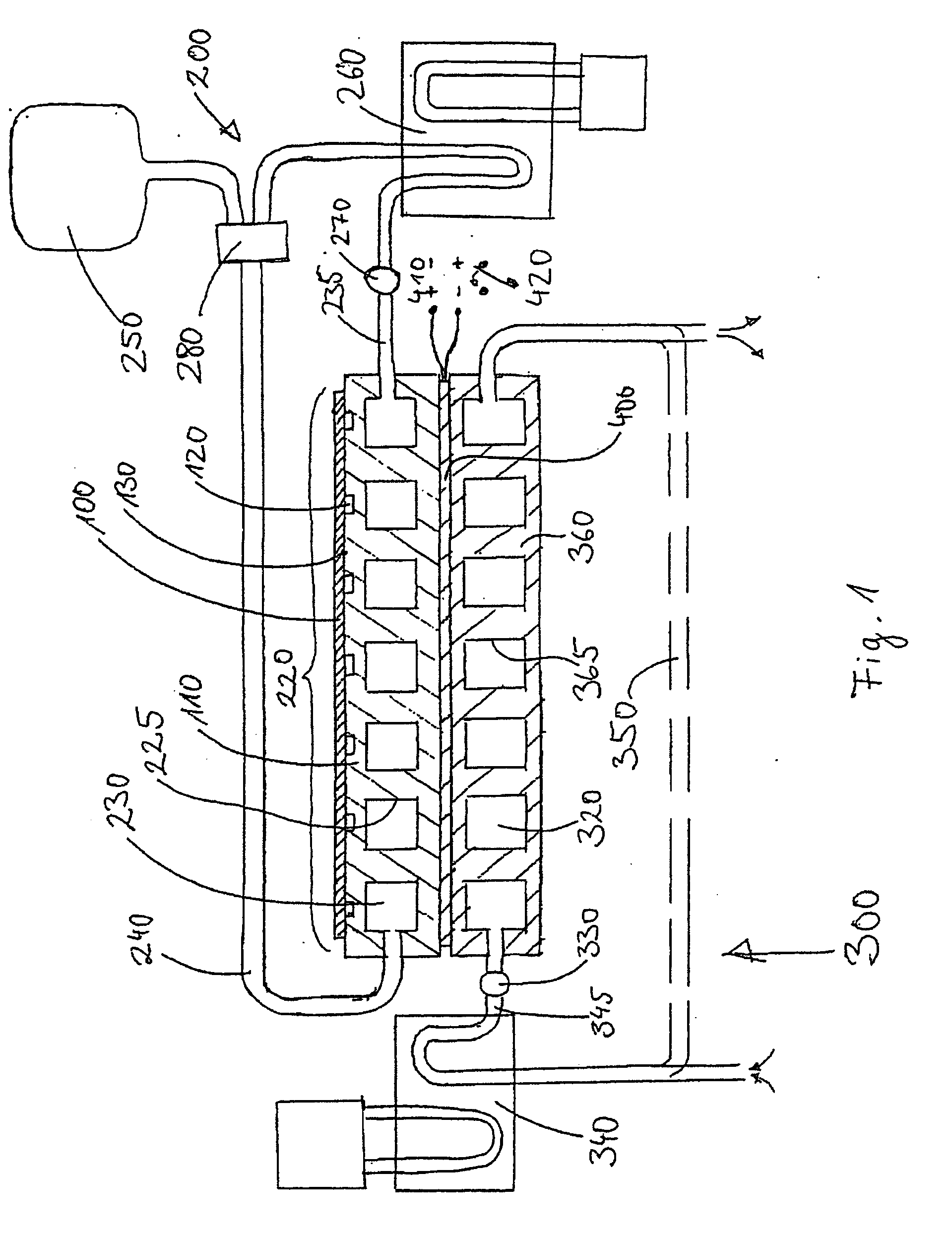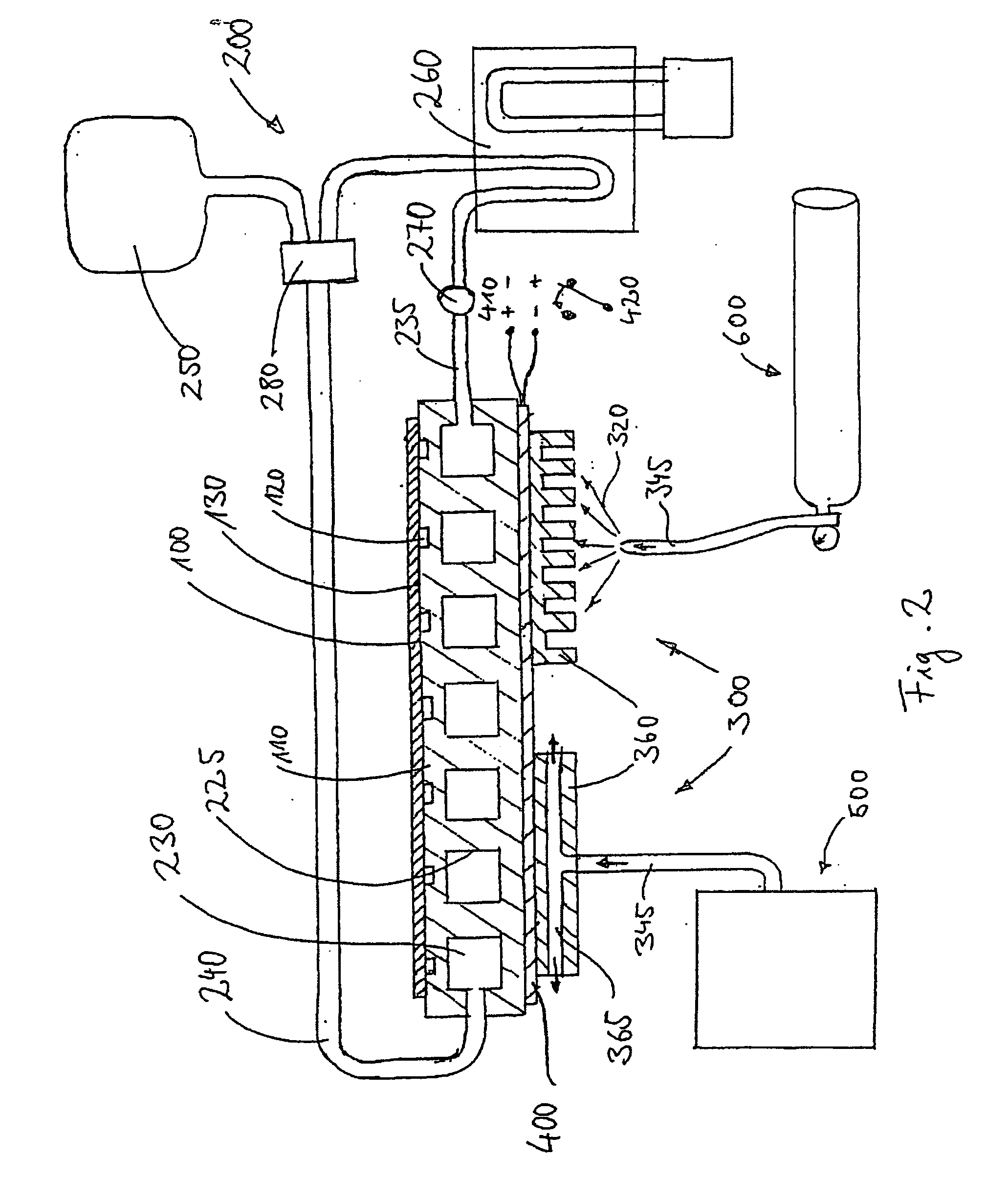[0011]In another preferred apparatus, the first temperature-regulating device has a first temperature-regulating means circuit, which is advantageously substantially closed, through which a first temperature-regulating fluid flows in order to regulate the temperature, wherein the first temperature-regulating means circuit is designed such that the first temperature-regulating fluid, once it has flowed through the region of the temperature-regulated main body, remains in the temperature-regulating means circuit at least partially at least in the operating range between the first temperature and the second temperature. This has the
advantage that a temperature-regulating fluid does not need to be replaced after use, but can be used again at least partially. Another
advantage is that the fluid—at least in stationary operation, that is to say if a set temperature is intended to be maintained—has, if it leaves the range to be temperature-regulated, a temperature which is negligibly above or below the entry temperature with the result that in an external temperature-regulating apparatus, in which the fluid is meant to be brought to entry temperature, only a small
temperature difference needs to be equalized, which can save energy. In order to equalize pressure peaks it is advantageously possible to provide a pressure-
relief valve. Advantageously, it is further possible that in a
closed circuit even those fluids can be used which must not escape into the surrounding area because they can have disadvantageous effects on the environment or on parts of the equipment.
[0012]An apparatus of the type in which the first temperature-regulating fluid in the temperature range between the first temperature and the second temperature up to a prespecified first
maximum pressure has a liquid aggregate state is furthermore preferred. This has the
advantage that the
heat transfer coefficient of liquids on
solid walls is generally higher than the
heat transfer coefficient of gases on
solid walls. It is possible, for example, in the case of a prespecified area, for more heat to be transferred per unit time when using liquid fluids so that a specific temperature can be adjusted more quickly than when using gaseous fluids.
[0013]Advantageously, an apparatus according to the invention is designed such that that part of the first temperature-regulating means circuit which is situated in the region of the temperature-regulated main body preferably can, via a shut-off valve, be shut off from the remaining region of the first temperature-regulating circuit and / or be connected to a pressure-relief region. This has the advantage, for example, that in a first temperature range of the temperature-regulated main body, in which the
fluid pressure of the used first temperature-regulating fluid would exceed a permissible
maximum pressure, that region of the temperature-regulating means circuit which is subjected to this temperature, can be emptied at least partially or can be connected to a, pressure-relief region (such as a reservoir or a
surge tank) so that an increase in pressure above a predetermined or predeterminable value is prevented.
[0014]Furthermore, an apparatus in which the second temperature-regulating device for regulating the temperature of the main body has a second closed temperature-regulating means circuit, through which a second temperature-regulating fluid flows in order to regulate the temperature, is preferred. With respect to the advantages of such an embodiment, reference can be made to the statements made with respect to the first temperature-regulating device.
[0015]In an apparatus according to the invention, the second temperature-regulating fluid advantageously has, in the temperature range between the third temperature and the fourth temperature, a liquid aggregate state up to a prespecified second
maximum pressure. With respect to the advantages of such an embodiment, reference can be made to the statements made with respect to the first temperature-regulating device.
[0016]An apparatus in which the second temperature-regulating fluid has, in the temperature range between the third temperature and the fourth temperature, a liquid or a gaseous aggregate state is also advantageous. This has the advantage that pressure peaks in the circuit can be avoided more easily than is the case in a liquid fluid. Furthermore, a gaseous fluid can be used to realize higher flow rates, so that it is also possible in
heat transfer coefficients for “gases on walls” for large flows of heat to be realized. In particular in an operating range in which the main body is intended to be cooled down from a temperature which is above the second temperature—that is to say in a range in which the first temperature-regulating device cannot be operated on account of the high pressures—it is also possible, due to the large temperature differences between the temperature-regulating fluid and main body which generally prevail in this case, for an effective
cooling effect to be achieved by way of a gas flow.
 Login to View More
Login to View More  Login to View More
Login to View More 


